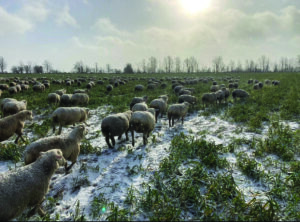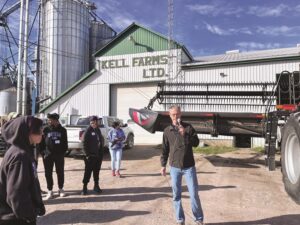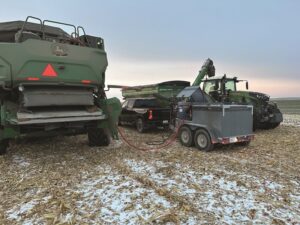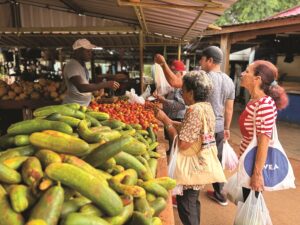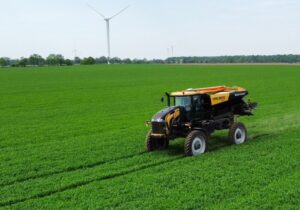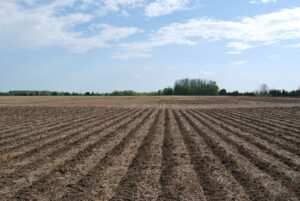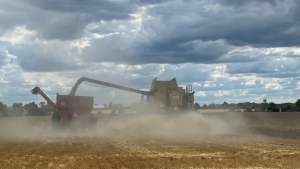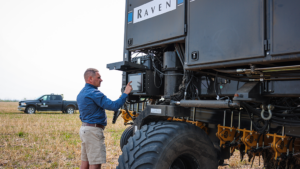How compaction happens
Impact of tires, organic matter, water infiltration, and more
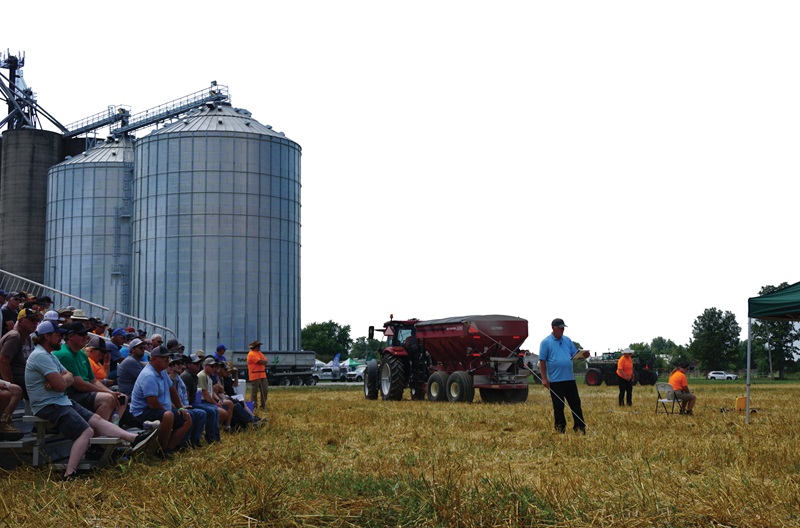
There was a lot of big iron on display in Rutherford, Ontario, on August 7, 2025. Above-ground heavy metal wasn’t the point of focus, though. It was soil, and what machines, large and small, do to it.
The latest Ontario Soil and Crop Improvement Association compaction event featured a range of information sessions, from the impact of different tire and equipment configurations to methods for achieving compaction remediation. The event’s overarching theme highlighted how compaction, and how it happens, is more complex than one might expect.
TIRE SCIENCE
Kevin Barnim, an agricultural tire and wheel specialist with Tirecraft, began one session by discussing the importance of determining tire pressure based on the weight of the implement. Different tire types, however, can reduce required pressures.
Increased Flexation (IF) and Very High Flexation (VF) tires, for example, can operate at 20 and 40 per cent lower pressure than standard, respectively, because they are constructed with steel bands running higher within the sidewall. Low Side Wall (LSW) tires can similarly allow for operation at reduced pressures, while dampening swaying. Cyclical Field Operation (CFO) tires, common on combined and grain carts, provide less ground pressure for equipment that frequently changes in weight. Tracks are sometimes identified as a means of reducing compaction, too, but Barnim says they still cause load spikes.
They also “don’t road well,” taking more fuel to operate and wearing faster than tires when not in the field.
Generally speaking, Barnim believes Central Tire Inflation Systems (CTIS) can be a real winner.
“In most cases, it’s about half the air pressure from the road to the field,” he says, referring to the amount of air required for effective operations on the two surfaces. Barnim adds that central inflation systems are particularly useful for sprayers and spreaders as they often travel to multiple fields on any given day. They also make good sense on planters, given well-documented yield losses incurred by compaction from over- pressured planter tires. Indeed, Barnim says he doesn’t know why every centre-folding planter is not equipped with inflation-deflation capability.
Central inflation systems also have safety features, including automatic settings to increase pressure once certain speeds are reached—assuming manual inflation did not occur due to operator error. As pointed out later in the day by Peter Johnson and Greg Stewart—the event’s compaction demonstration hosts—the importance of proper pressure on public roads should not be understated, given operator liability should an accident cause harm to a person or property.
Since tire pressure also increases by one PSI for each degree of temperature rise, Barnim also says central inflation systems can keep equipment in optimal operational condition throughout the working day. In terms of cost, such systems can run in the area of $20,000, with the compressor being the most expensive component. However, a compressor mounted on one tractor can be used to operate a variety of implements if they have the rest of the inflation system installed. A centralized ISOBUS interface can be used to host information for multiple implements, enabling a more efficient inflation- deflation process.
ROLE OF ROOTS
The Rutherford compaction event also featured sessions on compaction troubleshooting—that is, understanding soil dynamics, and how to remediate compaction after it happens.
Manual tillage can work, according to Dan Saurette, pedologist with the Ontario Ministry of Agriculture, Food and Agribusiness.
If subsoil compaction is an issue, a deep rip capability can help, provided the soil is dry enough to fracture. Wet soil, conversely, will not break apart well. Additional methods—namely the use of living roots to improve soil organic matter and water infiltration—are also critical to compaction management and prevention.
Diving further into the role of cover crops was Jake Munroe, field crop soil management specialist, and Christine Brown, field crop sustainability specialist with the provincial ministry.
The pair describe cover crops, and specifically their root systems, as acting “like rebar in the soil,” in that they help soil withstand the significant pressures placed on it by heavy equipment. Species with large tap roots can break compacted layers while providing large channels for rainwater, while others with more fibrous root systems support soil structure as well as water holding capacity. The contribution of cover crops to water absorption should not be underrated, they say, pointing to data indicating a vast difference between water infiltration times between soil with cracks and covers, compared to coverless sealed soils.
Brown reiterates that soil organic matter acts like a sponge, emphasizing the opportunities to build organic matter with cover crops. Ideally, she says, cover crops can be combined with manure to generate a “one plus one equals three” positive effect.
PRESSURE DRIVES COMPACTION
The main event at Rutherford compaction day was, as ever, the equipment demonstration, and some of the counterintuitive information it produced.
With sensors placed at depths of six, 12, and 20 inches, one of Johnson and Stewart’s main messages was “tire pressure drives soil compaction.” Other factors, such as an implement’s weight distribution and tire design, also play a role, even in smaller equipment. Sensor data reiterated that even small, seemingly harmless vehicles, such as trucks or autonomous implements, can cause surprisingly high pressure spikes—particularly if their tires are over-inflated. “A real change in mindset” is ongoing, Johnson says, where more farmers are recognizing that a tire that looks a little flat in the field is actually a good thing.
Johnsons and Stewart also noted that the presence of organic matter can prevent the most serious compaction from occurring in topsoil. The subsoil of the Brookston clay demonstration field appeared to be at greater risk due to its finer texture – something they say is concerning, as compaction remediation is harder to perform the further down compaction occurs.
Stewart says operators should think of soil as a structure under stress from above. Even if low-PSI tires spare the top layer from the worst pressure, the subsoil is still bearing the weight of the implement, equivalent to the lower structures of a building or bridge.
Whether the equipment answer to compaction prevention is tracks, more tires, or tires with more surface area, both hosts reiterate that there are always trade-offs. What is certain is that unnecessarily high pressure from above can often be avoided. •










